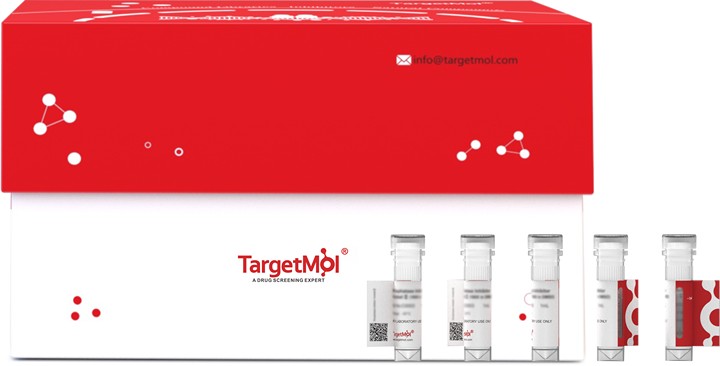 您的购物车当前为空
您的购物车当前为空
SPARCL1 Protein, Mouse, Recombinant (His)
一键复制产品信息SPARC-like protein 1 (SPARCL1; also known as SC1, high endothelial venule protein, or hevin) is an extracellular matrix-associated, secreted glycoprotein belonging to the secreted protein acidic and rich in cysteine (SPARC) family of matricellular proteins. It contains three conserved structural domains that are implicated in the regulation of cell adhesion, migration, and proliferation. SPARCL1 is expressed during embryogenesis and tissue remodeling and is especially prominent in brain and vasculature. Its down-regulation in a number of cancers and the possibility of its functional compensation by SPARC has led to recent interest in hevin as a tumor suppressor and regulator of angiogenesis. SPARCL1 has antiadhesive properties, and loss of SPARCL1 expression is associated with increased proliferative activity and cell cycle progression. It is suggested that it may influence multiple cellular processes during distinct stages of brain development and function. Besides, SPARCL1 can influence the function of astroglial cells in the developing and mature central nervous system (CNS).

SPARCL1 Protein, Mouse, Recombinant (His)
一键复制产品信息| 规格 | 价格 | 库存 | 数量 |
|---|---|---|---|
| 5 μg | ¥ 493 | 现货 | |
| 10 μg | ¥ 790 | 现货 | |
| 20 μg | ¥ 1,330 | 现货 | |
| 50 μg | ¥ 2,580 | 5日内发货 | |
| 100 μg | ¥ 5,170 | 5日内发货 |
产品信息
| 生物活性 | Measured by its ability to inhibit the cell growth of Mv-1-Lu mink lung epithelial cells. The ED50 for this effect is typically 1-4 μg/mL. |
| 产品描述 | SPARC-like protein 1 (SPARCL1; also known as SC1, high endothelial venule protein, or hevin) is an extracellular matrix-associated, secreted glycoprotein belonging to the secreted protein acidic and rich in cysteine (SPARC) family of matricellular proteins. It contains three conserved structural domains that are implicated in the regulation of cell adhesion, migration, and proliferation. SPARCL1 is expressed during embryogenesis and tissue remodeling and is especially prominent in brain and vasculature. Its down-regulation in a number of cancers and the possibility of its functional compensation by SPARC has led to recent interest in hevin as a tumor suppressor and regulator of angiogenesis. SPARCL1 has antiadhesive properties, and loss of SPARCL1 expression is associated with increased proliferative activity and cell cycle progression. It is suggested that it may influence multiple cellular processes during distinct stages of brain development and function. Besides, SPARCL1 can influence the function of astroglial cells in the developing and mature central nervous system (CNS). |
| 种属 | Mouse |
| 表达系统 | HEK293 Cells |
| 标签 | N-His |
| 蛋白编号 | P70663 |
| 别名 | SPARC like 1,Sc1,mast9,hevin,Ecm2 |
| 蛋白构建 | A DNA sequence encoding the mouse Sparcl1 (NP_034227.3) (Tyr368-Phe650) was expressed with a polyhistidine tag at the N-terminus. Predicted N terminal: His |
| 蛋白纯度 | > 90 % as determined by SDS-PAGE. |
| 分子量 | 34.8 kDa (predicted) |
| 内毒素 | < 1.0 EU/μg of the protein as determined by the LAL method. |
| 蛋白性状 | Lyophilized powder |
| 缓冲液 | Lyophilized from a solution filtered through a 0.22 μm filter, containing PBS, pH 7.4. Typically, a mixture containing 5% to 8% trehalose, mannitol, and 0.01% Tween 80 is incorporated as a protective agent before lyophilization. |
| 复溶方法 | A Certificate of Analysis (CoA) containing reconstitution instructions is included with the products. Please refer to the CoA for detailed information. |
| 存储 | It is recommended to store recombinant proteins at -20°C to -80°C for future use. Lyophilized powders can be stably stored for over 12 months, while liquid products can be stored for 6-12 months at -80°C. For reconstituted protein solutions, the solution can be stored at -20°C to -80°C for at least 3 months. Please avoid multiple freeze-thaw cycles and store products in aliquots. |
| 运输方式 | In general, Lyophilized powders are shipping with blue ice. |
| 研究背景 | SPARC-like protein 1 (SPARCL1; also known as SC1, high endothelial venule protein, or hevin) is an extracellular matrix-associated, secreted glycoprotein belonging to the secreted protein acidic and rich in cysteine (SPARC) family of matricellular proteins. It contains three conserved structural domains that are implicated in the regulation of cell adhesion, migration, and proliferation. SPARCL1 is expressed during embryogenesis and tissue remodeling and is especially prominent in brain and vasculature. Its down-regulation in a number of cancers and the possibility of its functional compensation by SPARC has led to recent interest in hevin as a tumor suppressor and regulator of angiogenesis. SPARCL1 has antiadhesive properties, and loss of SPARCL1 expression is associated with increased proliferative activity and cell cycle progression. It is suggested that it may influence multiple cellular processes during distinct stages of brain development and function. Besides, SPARCL1 can influence the function of astroglial cells in the developing and mature central nervous system (CNS). |





 |
|